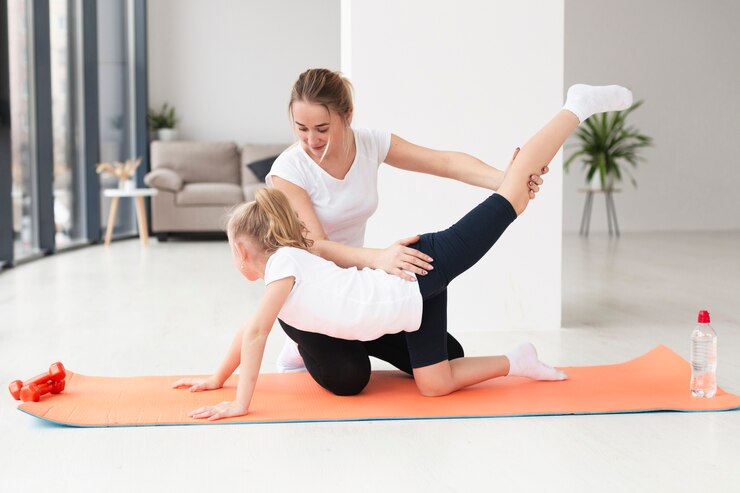Introduction:
Are you tired of feeling stiff and restricted in your movements? Do you dream of effortlessly bending, twisting, and reaching with ease? If so, you’re not alone. Flexibility is a crucial component of overall fitness and well-being, yet many people struggle to achieve it. In this comprehensive guide, we’ll explore the benefits of flexibility, the factors that influence it, and practical strategies to help you become more flexible.
Understanding Flexibility:
Flexibility refers to the ability of your muscles and joints to move through their full range of motion without discomfort or restriction. It encompasses both static flexibility (the ability to hold a stretch position) and dynamic flexibility (the ability to move a joint through its full range of motion). Improving flexibility can enhance performance in various physical activities, reduce the risk of injury, and contribute to overall physical comfort and well-being.

Benefits of Flexibility:
Enhanced Range of Motion: Increased flexibility allows for greater freedom of movement in everyday activities and sports.
Injury Prevention: Flexible muscles and joints are less prone to strains, sprains, and other injuries.
Improved Posture: Flexibility exercises can help correct muscular imbalances and promote better alignment.
Reduced Muscle Tension: Stretching and flexibility exercises can alleviate muscle tightness and promote relaxation.
Better Balance and Coordination: Increased flexibility can improve balance and coordination, reducing the risk of falls and enhancing athletic performance.
Factors Affecting Flexibility:
Genetics: While genetics play a role in determining an individual’s baseline flexibility, everyone can improve their flexibility with consistent effort.
Age: Flexibility tends to decrease with age due to changes in muscle elasticity and joint structure, but regular stretching can help mitigate these effects.
Physical Activity Level: Regular exercise, including stretching and flexibility training, can improve flexibility over time.
Lifestyle Factors: Sedentary behavior, poor posture, and repetitive movements can contribute to decreased flexibility.

Practical Strategies to Improve Flexibility:
Stretching Exercises: Incorporate a variety of stretching techniques, including static, dynamic, and proprioceptive neuromuscular facilitation (PNF) stretching.
Yoga: Practice yoga poses that target different muscle groups and promote flexibility, such as forward bends, backbends, and twists.
Pilates: Participate in Pilates sessions to strengthen and lengthen muscles, improving flexibility and overall body awareness.
Foam Rolling: Use a foam roller to release muscle tension and improve flexibility, particularly in areas prone to tightness.
Mobility Drills: Perform mobility exercises that focus on improving joint range of motion and movement patterns.
Gradual Progression: Avoid pushing your body too hard and aim for gradual improvements in flexibility over time.
Consistency: Make flexibility training a regular part of your exercise routine, dedicating time to stretching and mobility work several days a week.
Listen to Your Body: Pay attention to how your body responds to stretching and adjust your routine accordingly to avoid overtraining or injury.
Incorporating Flexibility Training into Your Routine:
Warm-Up: Begin each flexibility session with a brief warm-up to increase blood flow and prepare your muscles for stretching.
Cool Down: Conclude your workout with gentle stretching and relaxation exercises to promote recovery and flexibility.
Balance: Combine flexibility training with strength, cardiovascular, and balance exercises for comprehensive fitness.
Set Realistic Goals: Establish achievable goals for improving flexibility and track your progress over time.
Seek Professional Guidance: Consider working with a qualified fitness trainer, yoga instructor, or physical therapist to develop a personalized flexibility training plan tailored to your needs and goals.
Conclusion:
Becoming more flexible is within reach for anyone willing to commit to consistent effort and practice. By understanding the benefits of flexibility, addressing factors that influence it, and implementing practical strategies, you can unlock your body’s full potential and enjoy greater freedom of movement, improved performance, and enhanced overall well-being. So, if you’re ready to embark on the journey to increased flexibility, take the first step today and start reaping the rewards tomorrow.
For more information click here – Cardio or Weightlifting | Which Is Better for Weight Loss?


